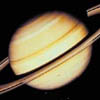
Plus Advent Calendar Door #3: Fantastic Fibonacci

You probably guessed that an advent door featuring rabbits can only mean one thing: the famous Fibonacci sequence
1, 1, 2, 3, 5, 8, 13, 21, ...
First discovered in the 12th century by Leonardo Fibonacci while thinking about a problem involving baby rabbits, the sequence has since been found all over nature, from the spirals in sunflowers to the family tree of bees. It comes with a number called the golden ratio, famous for its interesting mathematical properties and a (supposed) connection to our sense of beauty.
The following articles will tell you all you need to know about the Fibonacci sequence and the golden ratio. Enjoy!
The Fibonacci sequence: A brief introduction — Find out how the famous sequence arose from a problem involving rabbits.
The life and numbers of Fibonacci — See how the sequence also appears in the family trees of bees, in the turns of sea shells and sunflower seed heads, and how it all stemmed from a simple example in one of the most important books in Western mathematics.
Maths in a minute: The golden ratio — A quick introduction to the famous number and how it is linked to the Fibonacci sequence.
The golden ratio and aesthetics — It was Euclid who first defined the golden ratio, and ever since people have been fascinated by its extraordinary properties. Find out if beauty is in the eye of the beholder, and how the golden ratio crosses from mathematics to the arts.

Maths in a minute: Continued fractions — A quick introduction to why the golden ratio is the most irrational number of them all.

Chaos in Numberland: The secret life of continued fractions — A deeper look at continued fractions, which provide the most revealing representations of many numbers, and what they have to do with the golden ratio.
Return to the Plus advent calendar 2019.